Manufacturing Energy

What is the impact of smart manufacturing on industrial energy consumption ?
Smart manufacturing, or Industry 4.0, is transforming industrial operations through AI, IoT, and robotics to boost efficiency and sustainability. One major benefit is its impact on reducing energy consumption in industries. This article discusses how smart manufacturing can aid in decreasing energy usage: 1. **Optimization of Production Processes**: Real-time data analytics and predictive maintenance techniques lead to less energy waste and higher efficiency. Sensors monitor equipment performance to reduce downtime and energy consumption during repairs. 2. **Automation and Robotics**: Replacing manual labor with automated machines and robots results in higher precision and consistency while minimizing energy usage. Smart technologies also enable better resource allocation for reduced energy consumption. 3. **Energy Management Systems (EMS)**: EMS are crucial for monitoring and controlling energy consumption. They provide insights into energy usage patterns, allowing companies to identify areas where energy savings can be achieved. Implementing energy-saving measures based on EMS data can significantly cut energy consumption and costs. 4. **Renewable Energy Sources**: Smart manufacturing promotes the use of renewable energy sources like solar and wind power to reduce dependence on non-renewable sources like fossil fuels. This contributes to environmental sustainability by lowering greenhouse gas emissions. Integrating smart grids into industrial facilities further optimizes energy distribution and enhances efficiency. Overall, smart manufacturing significantly impacts industrial energy consumption by optimizing production processes, incorporating automation and robotics, implementing energy management systems, and promoting renewable energy sources. These advancements not only reduce energy waste but also contribute to environmental sustainability by lowering greenhouse gas emissions.
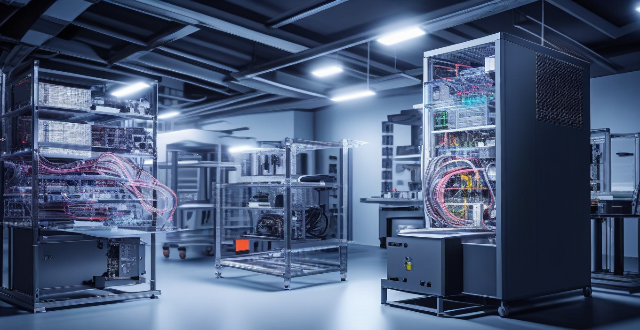
How has the adoption of Industry 4.0 technologies influenced energy efficiency in manufacturing ?
Industry 4.0 technologies significantly impact energy efficiency in manufacturing by enabling precision and optimization, data-driven decision making, resource management, promoting sustainability, and enhancing employee engagement. These advancements contribute to a future where smart manufacturing and sustainability are intertwined.
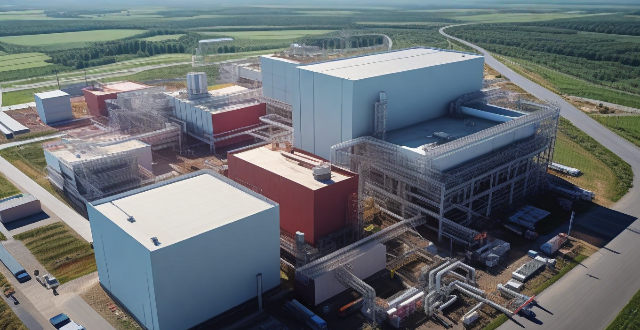
How has automation changed the manufacturing industry ?
Automation has significantly impacted the manufacturing industry by increasing productivity, reducing costs, enhancing safety, and providing flexibility. It has also led to improved data collection and analysis but has shifted labor force needs and raised environmental considerations.

How do safety regulations affect the manufacturing industry ?
Safety regulations are critical in manufacturing for worker safety, environmental protection, and product quality assurance but can increase costs and administrative burden while potentially slowing innovation.
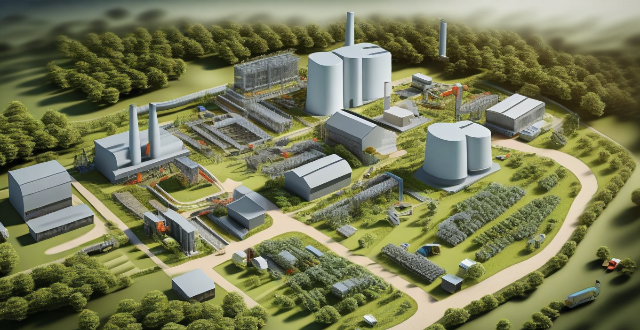
Are there any environmental concerns associated with the production and disposal of DC brushed motors ?
The article discusses the environmental concerns associated with DC brushed motors, including high energy consumption, material extraction and processing, manufacturing processes, and end-of-life disposal. It suggests potential solutions such as improved efficiency, sustainable material sourcing and processing, eco-friendly manufacturing practices, and responsible end-of-life management to mitigate their impact on the environment.

How has the Clean Energy Revolution affected the job market ?
The clean energy revolution has created new job opportunities across various sectors, including solar, wind, geothermal, hydropower, and bioenergy. The industry requires specialized skills in engineering, manufacturing, maintenance, sales, marketing, policy analysis, and advocacy. The clean energy revolution has also transformed existing industries by integrating renewable energy sources into their operations. The shift towards renewable energy sources is expected to continue, requiring individuals to acquire the necessary skills and knowledge to thrive in this rapidly evolving landscape.
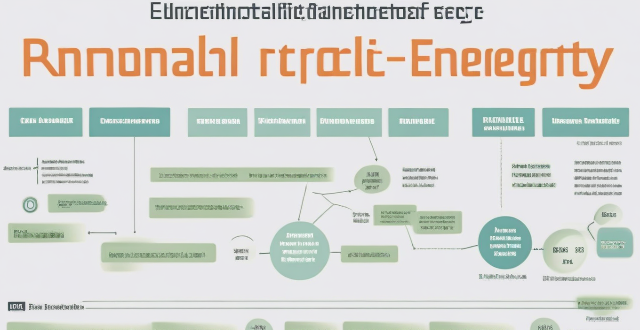
How do international climate agreements influence national policies on renewable energy ?
International climate agreements significantly shape national renewable energy policies by setting targets, offering financial aid and technology transfer, promoting innovation and collaboration, and creating market opportunities. This influence is evident in countries' ambitious renewable energy goals, their participation in global initiatives, and the growth of related industries. Such concerted efforts are crucial for achieving a sustainable, low-carbon future.

How does wind energy compare to solar energy ?
Wind energy and solar energy are both renewable sources of energy that have gained popularity in recent years. Wind turbines can generate electricity with high efficiency and low maintenance cost, while solar panels have a low initial cost and long lifespan. However, wind turbines can create noise pollution and have limited availability, while solar panels rely on sunlight and require a large amount of land. Both sources have their advantages and disadvantages, making them suitable for different applications.

What are the most effective methods for improving industrial energy efficiency ?
The most effective methods for improving industrial energy efficiency include process optimization, using energy-efficient equipment, harnessing renewable energy sources, thermal management, power management, employee training and awareness, employing energy information systems, and complying with policy and regulatory standards. These methods can reduce operational costs, conserve resources, and minimize environmental impact.

In which industries are permanent magnet motors most commonly used ?
Permanent magnet motors are utilized across a wide range of industries due to their efficiency and reliability. Key sectors include the automotive industry, where they power electric and hybrid vehicles and are used in automated manufacturing. In aerospace and defense, PM motors are crucial for aircraft systems and military applications. Appliance manufacturing benefits from PM motors in household and commercial equipment. The medical sector employs them in imaging equipment and surgical tools. Manufacturing and process control use PM motors in CNC machinery and pumps/valves. Renewable energy sectors such as wind turbines and solar tracking systems also rely on these motors. Consumer electronics, including audio and visual equipment as well as toys and hobbyist products, make use of permanent magnet motors for various functions.

What are the environmental impacts of electric cars ?
Electric cars, also known as EVs (Electric Vehicles), have become increasingly popular in recent years due to their potential to reduce greenhouse gas emissions and improve air quality. However, like any other technology, electric cars also have some environmental impacts that need to be considered. In this article, we will discuss the various environmental impacts of electric cars. One of the most significant environmental benefits of electric cars is their ability to reduce greenhouse gas emissions. Compared to traditional gasoline-powered vehicles, electric cars produce zero tailpipe emissions. This means that they do not release harmful pollutants such as carbon dioxide, nitrogen oxides, and particulate matter into the atmosphere. As a result, electric cars can help reduce air pollution and improve public health. The environmental impact of electric cars also depends on the source of energy used for charging them. If the electricity used to charge an electric car comes from renewable sources such as wind or solar power, then the overall environmental impact is positive. However, if the electricity comes from coal-fired power plants or other non-renewable sources, then the environmental benefits are reduced. It is essential to ensure that the electricity used for charging electric cars comes from clean and sustainable sources. The production of lithium-ion batteries used in electric cars has some environmental impacts. The mining and processing of raw materials required for battery production can lead to water pollution, soil contamination, and habitat destruction. Additionally, the disposal of spent batteries can pose challenges as they contain toxic chemicals that can harm the environment if not disposed of properly. Recycling programs and research into alternative battery technologies can help mitigate these impacts. The manufacturing process of electric cars also has some environmental impacts. The production of electric car components requires energy and resources, which can lead to greenhouse gas emissions and other forms of pollution. However, compared to traditional gasoline-powered vehicles, electric cars generally have a lower environmental impact during the manufacturing process due to their simpler design and fewer moving parts. To fully understand the environmental impacts of electric cars, it is essential to consider their entire lifecycle, including raw material extraction, manufacturing, use, and disposal. A comprehensive lifecycle analysis can help identify areas where improvements can be made to reduce the overall environmental impact of electric cars. This may include using more sustainable materials, improving energy efficiency during manufacturing, and developing better recycling programs for spent batteries. In conclusion, while electric cars offer significant environmental benefits over traditional gasoline-powered vehicles, they also have some environmental impacts that need to be considered. By addressing these issues through sustainable practices and continued research, we can maximize the positive environmental impacts of electric cars and work towards a cleaner, greener future.

How can businesses adopt sustainable energy practices to reduce their carbon footprint ?
Businesses can adopt sustainable energy practices to reduce their carbon footprint by switching to renewable energy sources, improving energy efficiency, implementing energy management systems, promoting green commuting, using environmentally friendly materials and processes, and educating stakeholders. These strategies not only benefit the environment but also enhance a company's reputation and can lead to cost savings in the long run.

What are some innovative methods for improving industrial energy efficiency ?
Innovative Methods for Improving Industrial Energy Efficiency - Advanced Technologies: AI and Machine Learning for predictive maintenance and optimization of energy consumption, IoT sensor networks and remote control systems. - Process Optimization Techniques: Heat Recovery Systems like energy recuperation and Combined Heat and Power (CHP), process integration through industrial symbiosis and lean manufacturing. - Building Design and Management: Green architecture using eco-friendly materials and natural lighting/ventilation, Smart Building Management Systems with automated controls and energy management software. - Employee Training and Involvement: Educational programs on energy conservation, skill development for new technologies, participation incentives through reward systems and team challenges.

What are the benefits of investing in clean energy ?
Investing in clean energy offers benefits including reduction in greenhouse gas emissions, job creation, energy security, health benefits, and cost savings. It is a smart investment that aligns with our responsibility to protect the environment for future generations.

How does energy transition contribute to combating climate change ?
The text discusses the importance of energy transition in combating climate change. It outlines how this transition contributes to reducing carbon emissions, increasing energy efficiency, promoting sustainable practices, stimulating innovation and economic growth, integrating smart grids and energy storage, and enhancing international cooperation. The shift from fossil fuels to renewable energy sources is crucial for mitigating global warming by directly addressing greenhouse gas emissions.

What impact does climate change legislation have on renewable energy development ?
Climate change legislation significantly influences renewable energy development by providing financial incentives, establishing mandated targets, supporting research and infrastructure, creating consumer awareness, fostering international cooperation, implementing regulations, setting environmental standards, and promoting economic growth through job creation. These measures collectively drive the energy sector towards sustainability and a low-carbon future.
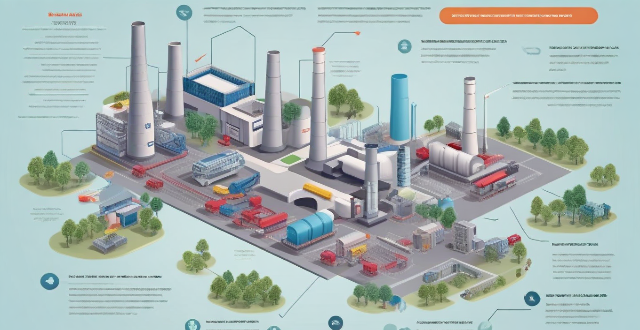
How do clean production technologies impact energy efficiency and conservation ?
Clean production technologies significantly enhance energy efficiency and conservation by reducing waste, optimizing processes, integrating renewable energy, monitoring energy consumption, and promoting product longevity. These strategies not only conserve energy but also align with broader sustainable development goals, offering economic benefits, environmental stewardship, and social responsibility.

What are the advantages and disadvantages of wind energy ?
The given text is about the advantages and disadvantages of wind energy. The advantages include being renewable and sustainable, environmentally friendly, cost-effective, job creation, and energy independence. On the other hand, the disadvantages are its intermittent nature, land use concerns, noise and visual impact, wildlife impact, and high initial cost.
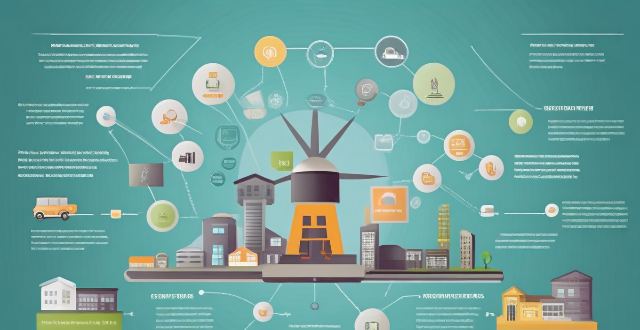
What impact does energy transition have on employment and job creation ?
The energy transition from fossil fuels to renewable sources significantly impacts job creation and employment. This shift brings growth in renewable energy sectors, green economy expansion, research & development, infrastructure development, and energy efficiency services. However, it also causes employment shifts such as a decline in fossil fuel industries, skill transition, geographical impact, supply chain effects, and policy-driven changes. Managing these challenges through strategies like reskilling programs and supportive policies is crucial for a just and equitable energy future.

How will the shift towards electric vehicles impact energy transition goals ?
Electric vehicles play a crucial role in achieving energy transition goals by reducing greenhouse gas emissions, promoting renewable energy sources, and improving energy efficiency. They produce zero tailpipe emissions, leading to improved air quality in urban areas. The increased demand for renewable energy to power EVs drives the development of solar and wind technologies. EVs are more energy-efficient than traditional vehicles and can help reduce energy waste through smart charging systems. However, challenges such as infrastructure development and battery production must be addressed, while opportunities like job creation and technological innovation should be capitalized on to accelerate progress towards a sustainable future.

What are the benefits of using sustainable energy sources ?
Using sustainable energy sources provides environmental, economic, and social benefits. These include reduced greenhouse gas emissions, improved air quality, conservation of natural resources, protection of ecosystems, cost savings, job creation, energy independence, stable energy prices, improved public health, community resilience, education and innovation, and increased energy access. Transitioning to sustainable energy is essential for our future prosperity and survival.
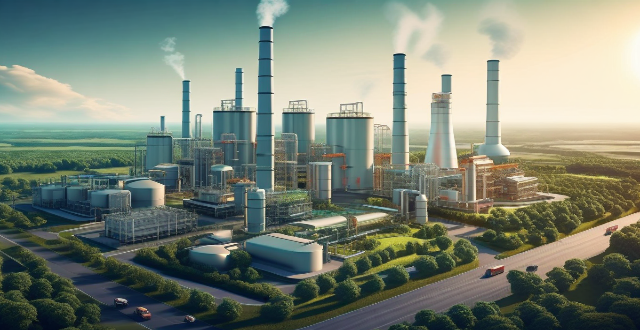
What role does natural gas play in the global energy market ?
Natural gas is a key player in the global energy market due to its environmental advantages, economic benefits, contributions to energy security, technological advancements, and versatile applications across sectors.
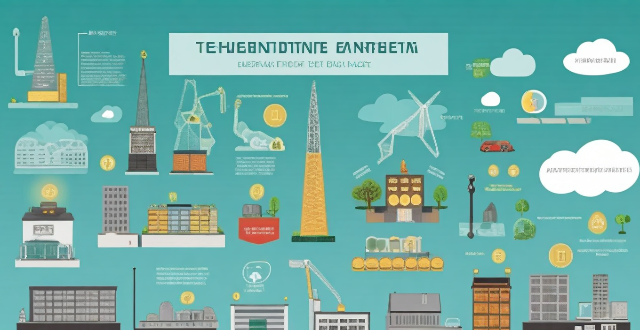
How is renewable energy affecting the traditional energy market ?
Renewable energy sources are having a significant impact on the traditional energy market, affecting pricing, market share, job creation, and environmental concerns. The increased efficiency and reduced installation costs of renewable technologies have made them more competitive with traditional energy sources, leading to declining electricity prices overall. Additionally, the growing demand for renewable energy sources has led to an increase in their market share, particularly for solar and wind power. The transition to renewable energy is also creating new job opportunities across various sectors of the economy, while addressing environmental concerns associated with fossil fuel consumption.

What are the main challenges in developing advanced energy storage technologies ?
The main challenges in developing advanced energy storage technologies include high cost, limited resource availability, performance metrics, safety concerns, environmental impact, regulatory compliance, and technological innovation. These challenges require significant investment in research and development, addressing supply chain issues, improving energy and power density, ensuring thermal and chemical stability, managing the environmental impact of battery production and disposal, adhering to international and local regulations, and continuously innovating to improve existing technologies and explore alternative solutions.
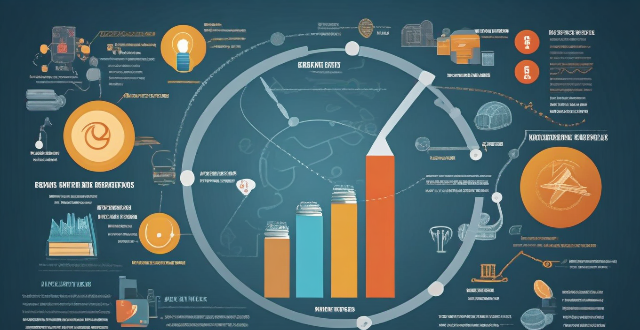
What are the benefits of using renewable energy sources for improving energy efficiency ?
Renewable energy sources offer multiple benefits, includingRenewable energy sources offer multiple benefits, including improved air quality, cost savings Renewable energy also provides stable energy prices and reduces dependence on imported fossil fuels, leading to greater energy security. Additionally, the development and deployment of renewable energy technologies create jobs and drive innovation and research in new technologies. Overall, investing in renewable energy is crucial for a sustainable future.

What is the role of artificial intelligence in modern rocket technology ?
The article discusses the pivotal role of Artificial Intelligence (AI) in revolutionizing various aspects of modern rocket technology. It explores how AI is transforming design and manufacturing processes, including computational fluid dynamics simulations, machine learning-driven material science, and automated manufacturing. The text also delves into AI's contributions to launch and orbital insertion, such as predictive maintenance, trajectory optimization, and real-time decision making. Furthermore, it highlights AI applications in on-orbit operations like autonomous navigation, swarm intelligence, and fault detection and recovery. The article concludes by discussing future implications of AI in deep space exploration, reusable rocketry, and collaborative robotics, emphasizing its potential to make space missions safer, more efficient, and cost-effective.
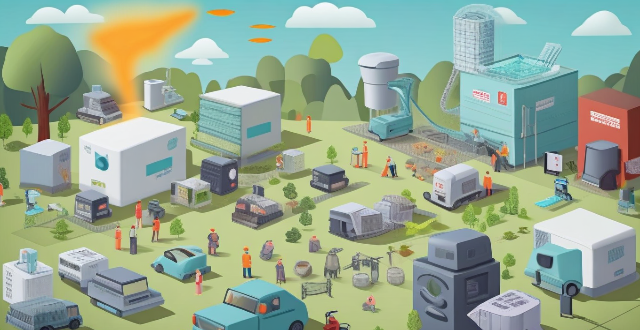
How does proper waste management aid in saving energy and reducing pollution ?
Proper waste management is crucial for conserving energy and reducing pollution. It involves strategies like composting organic waste to reduce methane emissions, enhancing recycling to save energy in manufacturing new products, preventing environmental pollution through proper disposal, promoting sustainable practices like reduce, reuse, and recycle, and supporting the circular economy model. By adopting these measures, we can move towards a more sustainable future that conserves resources and protects our planet.

What are some examples of successful clean energy investments ?
Investing in clean energy is becoming increasingly popular due to rising awareness of the need for sustainability. Successful investments include solar power, wind power, geothermal energy, hydroelectric power, bioenergy, electric vehicles, energy efficiency measures, and smart grid technology. These investments not only combat climate change but also create new economic opportunities and jobs.

Can you discuss the environmental impact of various energy storage methods ?
The text discusses the environmental impact of various energy storage methods, including batteries, pumped hydro storage, compressed air energy storage (CAES), and flywheels. It points out that while these methods allow for the efficient use of renewable energy sources and help to balance supply and demand, they also have varying levels of environmental impact. For example, battery production can result in water pollution and deforestation due to raw material extraction, while pumped hydro storage can affect local ecosystems and communities through land use and water usage. CAES may face challenges such as geological requirements and efficiency issues, and flywheels are considered an environmentally friendly option with a low environmental footprint. The text concludes that it is essential to consider both the efficiency and environmental implications of different energy storage solutions to ensure a sustainable future for our planet.

What is the current state of renewable energy research and development ?
Renewable energy research and development (R&D) is a rapidly evolving field that aims to create sustainable alternatives to traditional fossil fuels. The current state of renewable energy R&D can be characterized by several key trends: ### **Advances in Technology** - Solar energy research focuses on improving the efficiency of photovoltaic cells and concentrated solar power systems. - Wind energy technology is advancing with the development of offshore wind turbines and material innovations for turbine blades. - Hydropower research explores ways to harness energy from small streams and rivers without ecological harm, as well as improvements to pumped storage systems. - Geothermal energy is expanding beyond natural hotspots through enhanced geothermal systems and binary cycle power plants. ### **Integration with Grid Systems** - Smart grids enable better management of consumer demand and integrate distributed energy resources like rooftop solar panels and small wind turbines. - Energy storage solutions, such as battery technologies and pumped hydro storage, are being refined for improved efficiency and environmental impact. ### **Policy and Economic Drivers** - Government incentives like tax credits and feed-in tariffs encourage renewable energy adoption. - Carbon pricing mechanisms, including emissions trading schemes and carbon taxes, create financial incentives for companies to reduce their greenhouse gas emissions. ### **Environmental Impact and Sustainability** - Lifecycle analysis examines the manufacturing processes and end-of-life management of renewable energy equipment to minimize environmental footprint. - Biodiversity conservation efforts aim to mitigate the impact of renewable energy infrastructure on wildlife habitats and ecosystems. As technological innovation, grid integration advancements, supportive policies, and consideration for environmental impact continue, renewable energy is expected to play an increasingly vital role in global energy supply while helping to mitigate climate change.